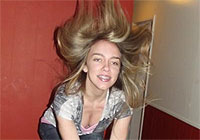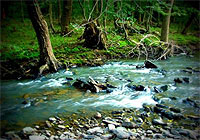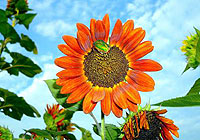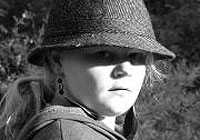|
Dear Stay Focussed reader,
Welcome to the latest newsletter.
Apologies for the lateness of this month's newsletter. If you've kept up to date with my Facebook page you'll know that we've moved to Australia ... again!
Anyway, we've found our feet a bit, and I've finally got around to this newsletter. The theme this month ... developing a critical eye It sounds a little crazy, and you might think that you either have a critical eye or you don't, but it can be trained!
You'll feel like you're just being harsh, and maybe you are (!), but if it helps you to see how you can improve your own photography, then it's worth trying.
Here's an excellent method to training your critical eye. First of all, be negative!
It's a funny thing about human nature, but it's often so much easier to be critical than positive.
I've found myself doing it many, many times.
We tend to be quick to criticise and slower to applaud. And that's a trait that can be used to your photographic advantage.
Start spotting the flaws
Because once you've spotted the flaws you'll know how to avoid those things in your own photography.
Once you start 'flaw spotting' it can be difficult to stop. And it's easy to go overboard. But every time you do spot something, there's another feather in your photography cap.
Start from top to bottom - 'read' the picture
And run your eyes across and down the picture. Almost like you're reading it in the way you'd read a book.
While you do so, look for anything that's out of place, or gets in the way of the overall image.
Some common things to look for are:
Objects in the background that should't really be there
Objects in the foreground that shouldn't be there
Lighting - is the scene evenly lit, or are there harsh shadows?
Empty areas of the picture that serve no purpose
And as you go you'll be able to add to this list with ease. Basically, look for anything that seems to stop the photo from being 100% perfect.
Transfer the flaws to your own photos
Because once you see where the flaws are, it's easier for you to avoid them in your photography.
If you've noticed photos where the background is way too cluttered, make sure you take photos against neutral backgrounds, or make sure you blur the background so it doesn't become an unwanted feature.
If you're noticed that photos have harsh shadows, when you take your photos use fill-in flash to reduce the shadows.
Easy!
One word of caution
Flaws can sometimes be a good thing in photography. Those harsh shadows? They can be used for artistic effect.
That big empty space? it can be used to convey a sense of isolation.
So start by noticing the flaws, remove them from your photography, and then introduce them as deliberate elements to your photography, rather than them being there because you didn't notice them before!
I've put links to some of the recent submissions to the site on the right here >>>>
Have a look at them, and other photos, and see if you can start to spot the flaws.
See you next month, and in the meantime, if you know of any other photographers that you think would find these newsletters and the site useful, please pass this email along.
See you next month, and in between on Facebook,
Darrell.
|
Mid Air

Nice attempt at freezing movement in photography.
Stream

And here's an example of the opposite, how to let movement blur in a photo.
June Bug Landing Pad

How to improve photography by including lots of primary colours.
3D photo gallery

And another opposite - instead of primary colours, here's an example of a black and white portrait.
|

